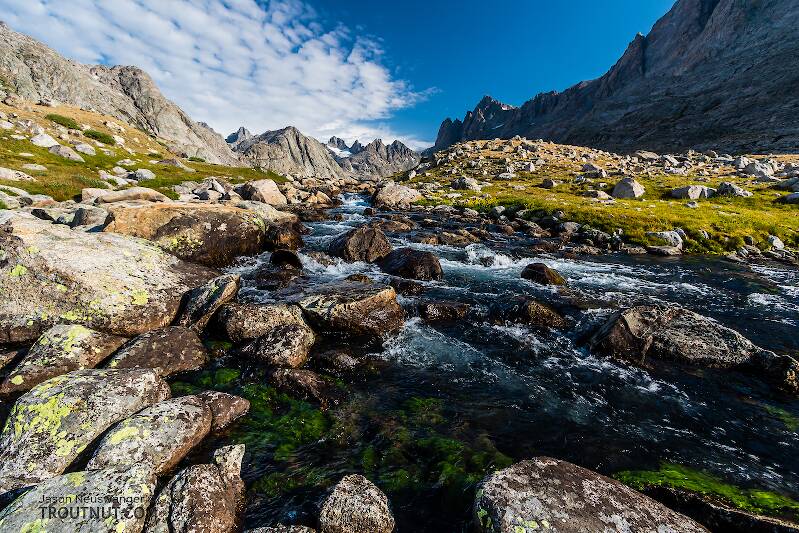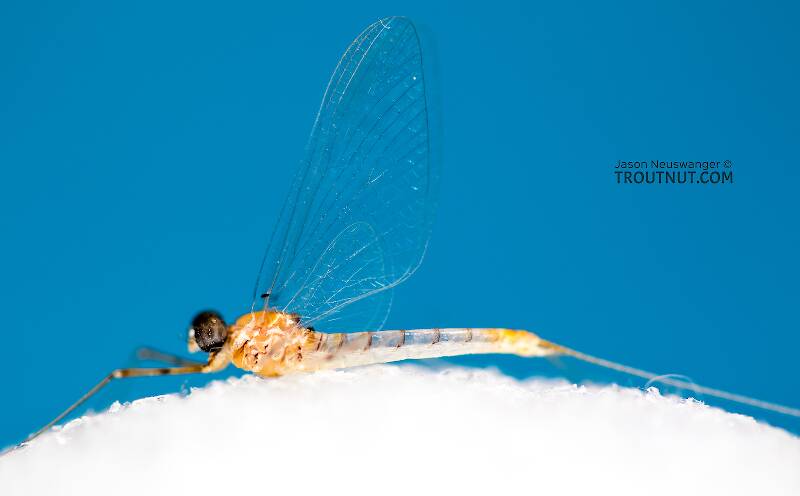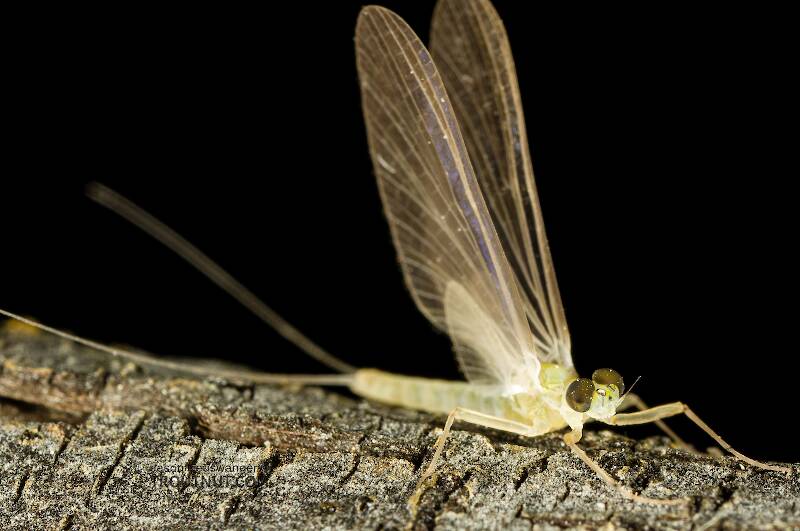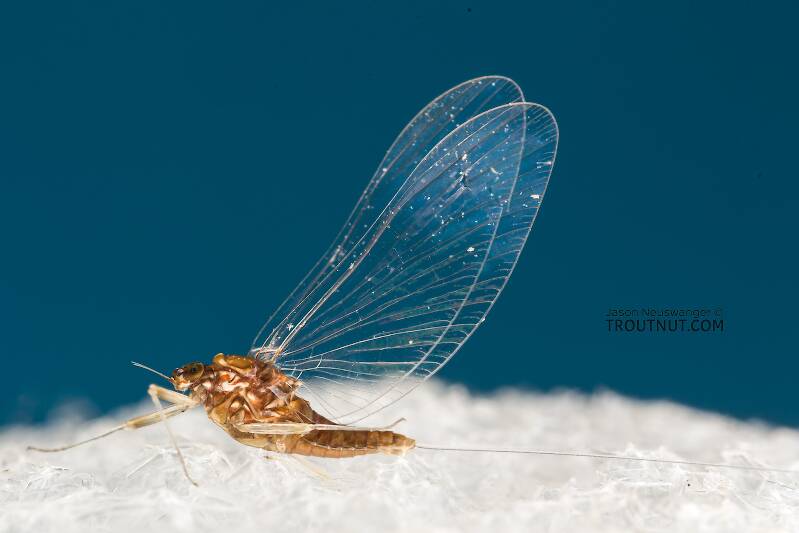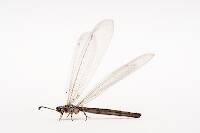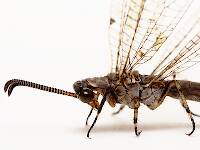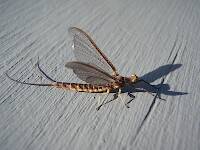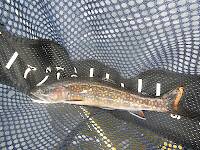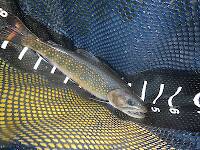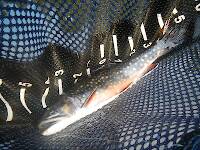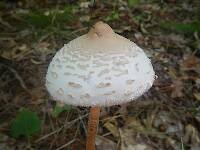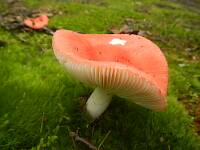
Hex Mayflies
Hexagenia limbata
The famous nocturnal Hex hatch of the Midwest (and a few other lucky locations) stirs to the surface mythically large brown trout that only touch streamers for the rest of the year.
Featured on the forum

This specimen keys pretty easily to Onocosmoecus, and it closely resembles a specimen from Alaska which caddis expert Dave Ruiter recognized as this genus. As with that specimen, the only species in the genus documented in this area is Onocosmoecus unicolor, but Dave suggested for that specimen that there might be multiple not-yet-distinguished species under the unicolor umbrella and it would be best to stick with the genus-level ID. I'm doing the same for this one.

Troutnut is a project started in 2003 by salmonid ecologist Jason "Troutnut" Neuswanger to help anglers and
fly tyers unabashedly embrace the entomological side of the sport. Learn more about Troutnut or
support the project for an enhanced experience here.
This topic is about the Insect Order Ephemeroptera
Mayflies may be the most important insects for trout anglers to understand. They are an ancient order of insects, famous outside the fly-fishing world for their fragile beauty and short adult lifespan, often a single day to mate and die. The mayfly's poignant drama attracts poets and anglers alike, but anglers make the most of it.Mayflies live more than 99% of their lives as nymphs on the river or lake bottom, filling many crucial roles in freshwater ecosystems as they feed and grow. They eventually emerge from the water as winged sub-adults called "subimagos" by scientists and "duns" by anglers. Duns evolved to be good at escaping the water, with a hydrophobic surface and hardy build, but they are clumsy fliers. Within a day or two they molt one last time into "imagos" or "spinners," the mature adults, a transformation captured in this photo series of a dun molting into a spinner. They have longer legs and tails, and sleeker, more lightweight bodies, giving them the airborne speed, agility, and long grasp they need for their midair mating rituals. They are usually darker than the duns and have shinier, more transparent wings. They die within minutes or hours after mating.
Example specimens
Rckrego on Apr 18, 2007April 18th, 2007, 7:32 am EDT
What's the difference between olives and bwo's? I've been told that there is a family or genus difference, and accordingly there are size and color differences. Is there anything definitive about this? Do the nymphs act differently? Are the hatches at different times of the year? Are the wings of olives really different from the wings of BWO's? thanks.
Here fishy, fishy, fishy...
Troutnut on Apr 18, 2007April 18th, 2007, 8:03 am EDT
Hey,
I hope you don't mind I deleted the other topic -- it'll get confusing if we have people answering your question in two places.
The short answer is that you just can't get this technical about common names like olives and BWOs. BWOs usually don't have blue wings anyway, and lots of them aren't even olive. People slap those labels on just about anything green or small except for inchworms. See one of my articles on this site for more about the common name confusion.
When you start wondering about details and distinctions like this, that's the time to take the plunge into scientific names. Your questions can't really be answered for "BWOs" or "Olives", but you can learn all kinds of interesting details about Baetis or Drunella. :)
I hope you don't mind I deleted the other topic -- it'll get confusing if we have people answering your question in two places.
The short answer is that you just can't get this technical about common names like olives and BWOs. BWOs usually don't have blue wings anyway, and lots of them aren't even olive. People slap those labels on just about anything green or small except for inchworms. See one of my articles on this site for more about the common name confusion.
When you start wondering about details and distinctions like this, that's the time to take the plunge into scientific names. Your questions can't really be answered for "BWOs" or "Olives", but you can learn all kinds of interesting details about Baetis or Drunella. :)
Jason Neuswanger, Ph.D.
Troutnut and salmonid ecologist
Troutnut and salmonid ecologist
Quick Reply
Related Discussions
Topic
Replies
Last Reply
6
Nov 4, 2011
by Dinerobyn
by Dinerobyn
8
Sep 23, 2018
by Jmd123
by Jmd123
34
Feb 5, 2013
by JOHNW
by JOHNW

